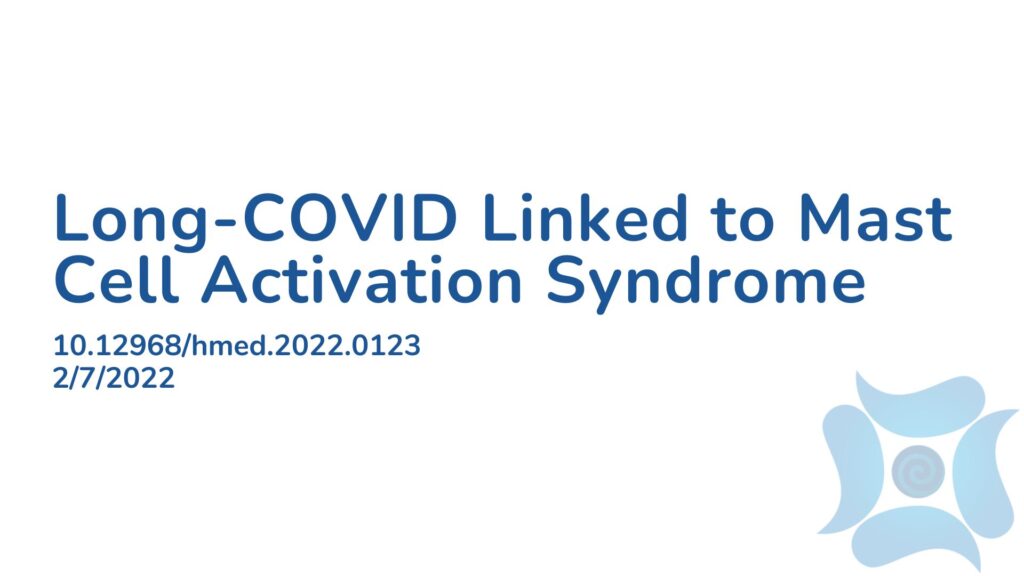Summary:
Mast cells are a type of white blood cell which are located in connective tissue, such as under the skin, in the lungs, intestines and nerves. Mast cells constantly release many chemicals including histamine, cytokines and prostaglandins. In mast cell activation syndrome (MCAS), mast cells release too many of these chemical agents, resulting in allergic symptoms such as skin rashes, gastrointestinal irritation and heart and respiratory symptoms. MCAS can be triggered by food, fragrances, stress or medication, to name a few. It has been theorized that post a COVID-19 infection that is classified as long-COVID, could lead to exacerbating undiagnosed MCAS. It has also been theorized that it can activate normal mast cells to react excessively, similarly to MCAS. Long-COVID is classified as COVID-19 symptoms that persist for more than 12 weeks after the initial infection. This paper explores the similarities between the two conditions and explores whether long-COVID could also be attributed to other conditions.
Abstract:
Mast cells are innate immune cells found in connective tissues throughout the body, most prevalent at tissue-environment interfaces. They possess multiple cell-surface receptors which react to various stimuli and, after activation, release many mediators including histamine, heparin, cytokines, prostaglandins, leukotrienes and proteases. In mast cell activation syndrome, excessive amounts of inflammatory mediators are released in response to triggers such as foods, fragrances, stress, exercise, medications or temperature changes. Diagnostic markers may be difficult to assess because of their rapid degradation; these include urinary N-methyl histamine, urinary prostaglandins D2, DM and F2α and serum tryptase (which is stable) in the UK. Self-management techniques, medications and avoiding triggers may improve quality of life. Treatments include mast cell mediator blockers, mast cell stabilisers and anti-inflammatory agents. ‘Long COVID’ describes post-COVID-19 syndrome when symptoms persist for more than 12 weeks after initial infection with no alternative diagnosis. Both mast cell activation syndrome and long COVID cause multiple symptoms. It is theorised that COVID-19 infection could lead to exaggeration of existing undiagnosed mast cell activation syndrome, or could activate normal mast cells owing to the persistence of viral particles. Other similarities include the relapse-remission cycle and improvements with similar treatments. Importantly, however, aside from mast cell disorders, long COVID could potentially be attributed to several other conditions.
Article Publication Date: 2/7/2022
DOI: 10.12968/hmed.2022.0123



